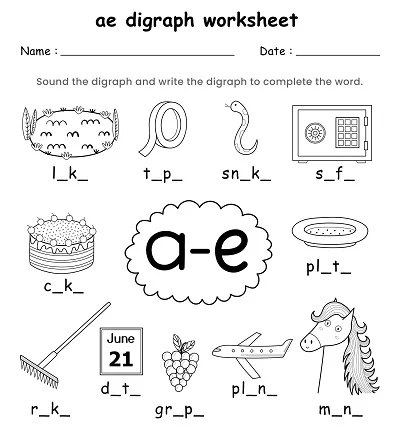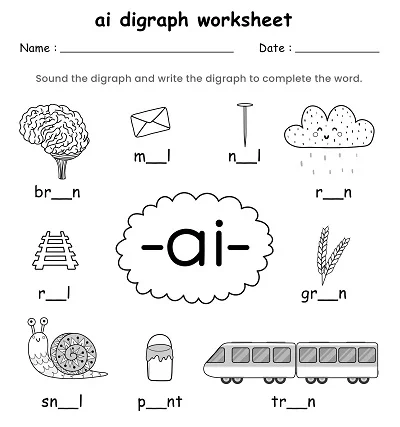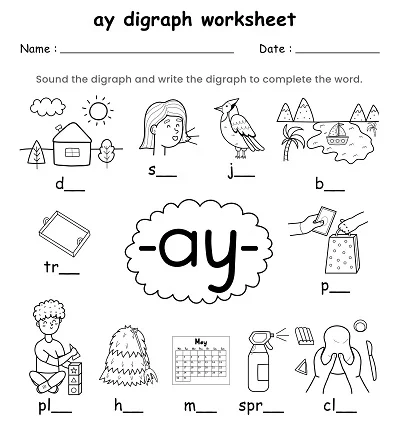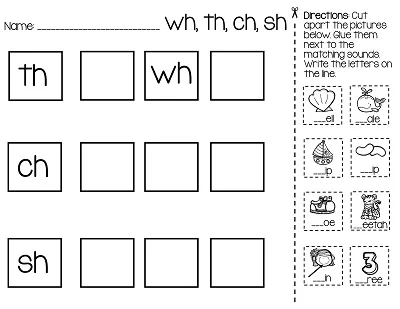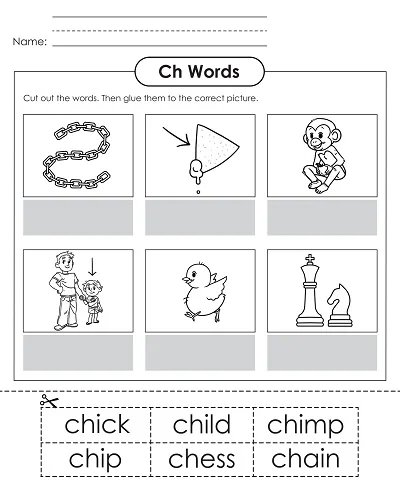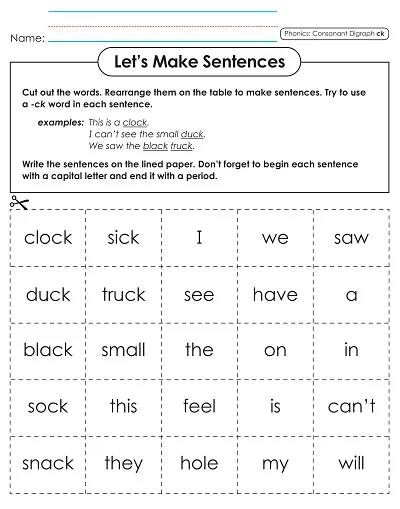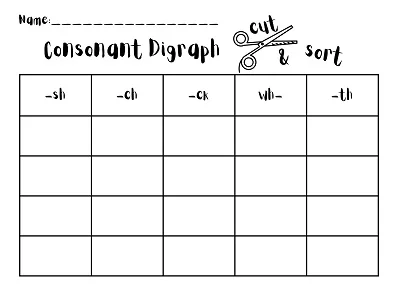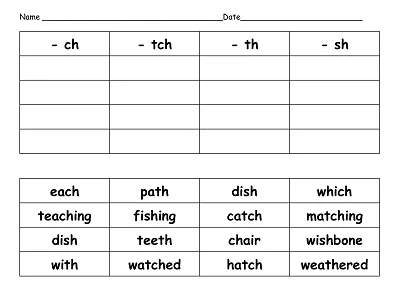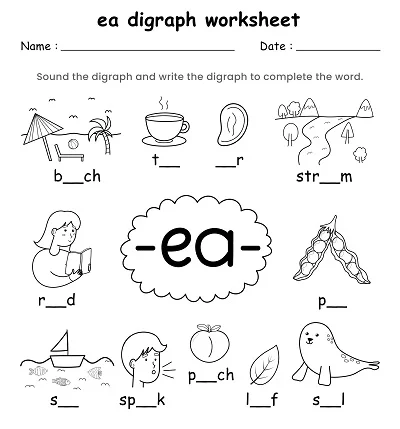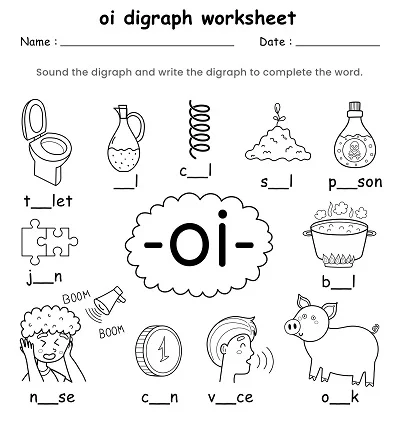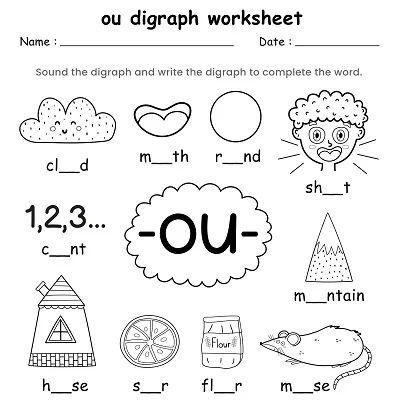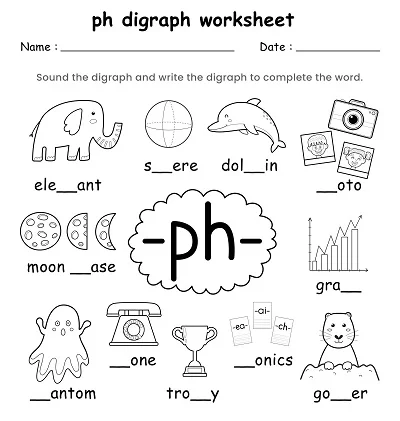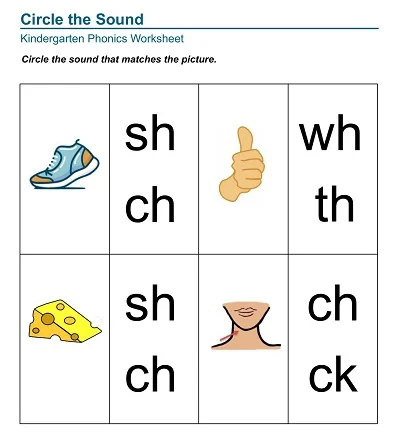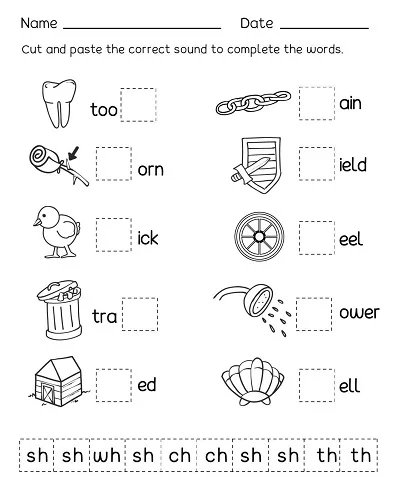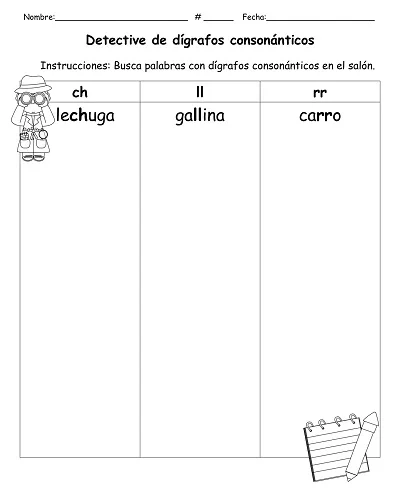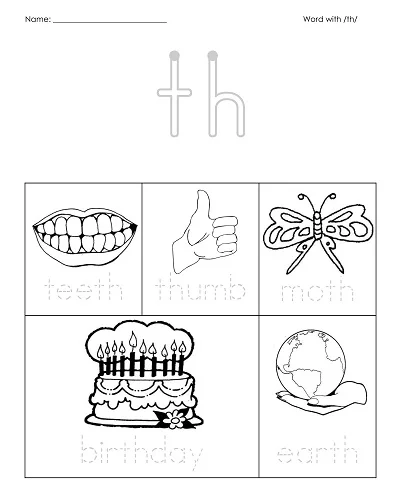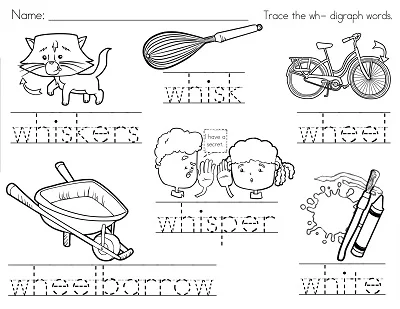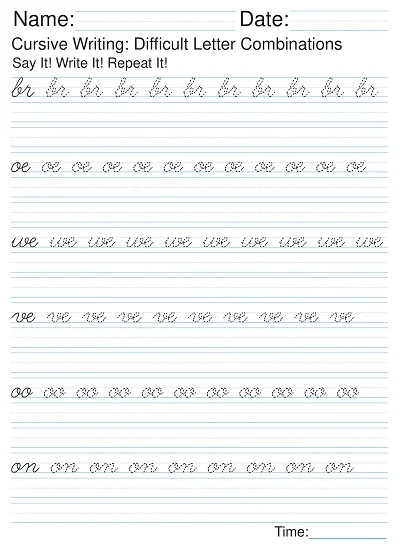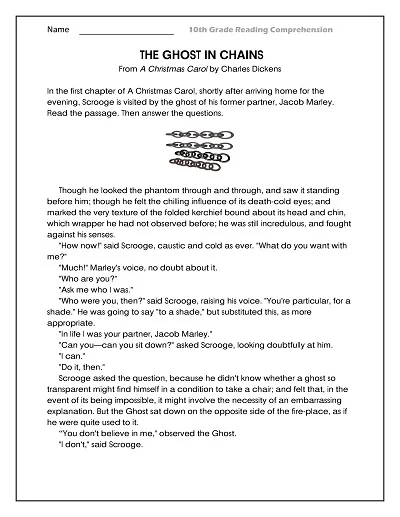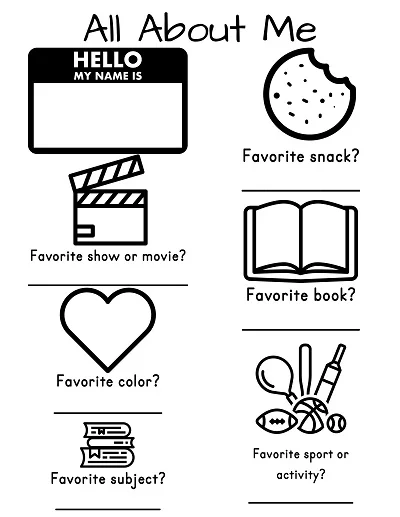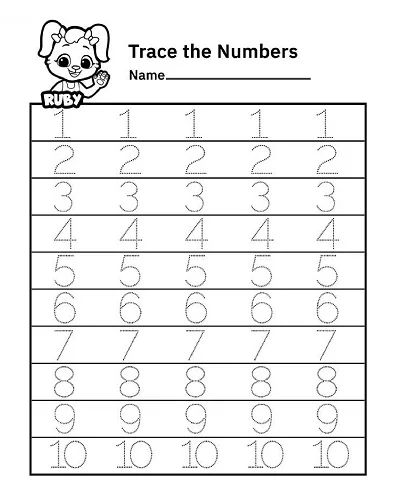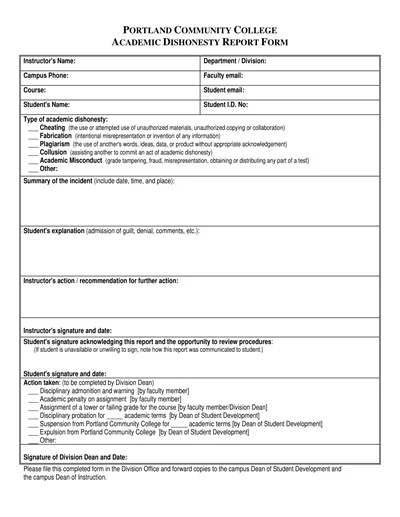A Consonant Digraph Worksheet is an interactive tool specially made to help students and even teachers practice consonant digraph words and understand consonant digraphs, which are two consonant letters that make a different sound when sung individually.
Worksheets in such lessons often involve matching, fill-under, and sorting word activities that help the child recognize and pronounce the said digraphs, thus facilitating reading and spelling abilities.
Download Free Consonant Digraph Worksheets
What is a Consonant Digraph Worksheet?
A Consonant Digraph Worksheet is instructional material to familiarize students with consonant digraphs. It provides examples of consonant digraphs, defined as two consonants combined and producing a sound that does not correspond to the individual sounds of two consonants in a word.
Worksheets like these are usually constructed around exercises that force the learner to look for words that feature consonant digraphs such as “sh,” “ch,” “th,” and “wh. ” By doing so, students are able to develop better and faster ways of reading and spelling, automatically transforming any booklet worksheet into an early literacy teaching aid.
How to Use the Consonant Digraph Worksheet
To effectively utilize the Consonant Digraph Worksheet, follow these guidelines:
- Review the Basics: One lesson the learner must grasp is understanding consonant digraphs. Say that these two consonants blend into a separate sound, which does not exist in Russian.
- Pronunciation Practice: Take your time reading the digraphs you have practiced on the worksheet and saying them aloud. You are enabling the learners to repeat after you ensure that you have corrected the tone by practicing.
- Identify and Highlight: Learner: Write down the words below and ask the learner to check which contain digraphs. Turning a textual element into a different color or underlining it effectively reinforces it with a highlighter.
- Matching Exercise: Use the matching section of the worksheet, which requires learners to match the digraphs with pictures of individuals or items to words familiar to them to reinforce the concept of the digraphs.
- Fill-in-the-Blanks: In the fill-in-the-blanks section, create questions that test learners’ creativity in using correct digraphs appropriate to the context of a sentence.
- Encourage Creative Use: Lastly, inform learners to attempt to come up with sentences, or even mini-stories, that can incorporate a definite number of digraphs learned; this ensures that the learner uses the learned material creatively.
Why Are Consonant Digraphs An Important Part of Phonics?
Consonant digraphs are essential as phonics because pupils need to know how different units of blended sound combinations are formed. It is also important to understand that while individual letters may generate one sound, consonant digraphs are two letters in one that generate the same sound.
This knowledge is important for recognizing individual written words and connecting them to accurate sounds, thus providing a good bridge between phonemic level and fluent reading. Knowledge of consonant digraphs enables a child to read more words, widening his/her word recognition language skills and improving spelling skills to have strong foundations in literacy.
Benefits of Using Consonant Digraph Worksheets
Teaching consonant digraph worksheets is crucial in the lower learning grade levels; they have several advantages that make it easier for any child to learn and master sound patterns.
Enhances Phonemic Awareness
These worksheets are designed to teach children the concept of reducing two consonants to one sound. This awareness is important in enhancing the principles of reading and spelling.
Promotes Blending and Decoding Skills
Small children also understand how different phonemes fit together into words through repeated exercises with different sounds. This is important in reading as it facilitates the actual reading and the level of understanding of a passage.
Supports Differentiated Learning
Worksheets allow differentiation of the lessons based on ability, so it is easy to give the children as much practice as needed and challenge the more able students.
Visual Learning
It can refer to colorful audios that include attractive graphics, which ensures that children learning, for instance, associate the sounds with the graphics, making the learning session more fun and productive.
Practical Application
These worksheets also contain examples of real-world digraph use to ensure the child acquires ample real-life application of this aspect.
How to Create a Consonant Digraph Worksheet Template
Formulating a consonant digraph worksheet template requires a lot of planning to give the worksheets an educational viewpoint, fun factor, and ease of usage. Here’s how you can design one:
- Objective Definition: First, deciding what aspects or topics are the focus of knowledge in the given worksheet is necessary. The above should indicate what consonant digraphs the students will learn, including sh, ch, th, and ph.
- Design Layout: Properly format the layout to include significant and easily understood continuity elements. Deliberately introducing words and pictures into the environment/display could provide some aspects concerning the digraph.
- Digraph Selection and Examples: Identify ten words for each consonant digraph – this will involve searching through each letter combination and retrieving a list of words with those two consonants. Be specific and specific, possibly you should look for about four different examples of the digraphs to accommodate the different uses of the digraphs.
- Visuals Inclusion: If possible, write visuals or pictures beside the example words that should be used alongside them. This helps familiarize the sound with its pronunciation, making it easier to recall the word.
- Practice Section: Another area to include is practice activities, which include matching exercises, fill-in-the-gaps exercises, or spaces to try to draw the word using the digraph. These activities can be used in different templates to diversify the learning flow.
- Instructions for Use: The directions should be provided at the top of the worksheet so that a layperson can understand them easily. If the worksheet is intended for students in a class, the page should contain recommendations on how teachers can assist learners during the task.
- Feedback Section: This should comprise a small section for feedback or for making notes as one reads. The student or the teacher can use this to note any difficulties or observations. The student or the ‘encoder’ can use this to note any difficulties or observations.
By doing so, you can create a consonant digraph worksheet template that is both fun and informative for students learning the basics of reading and writing.

